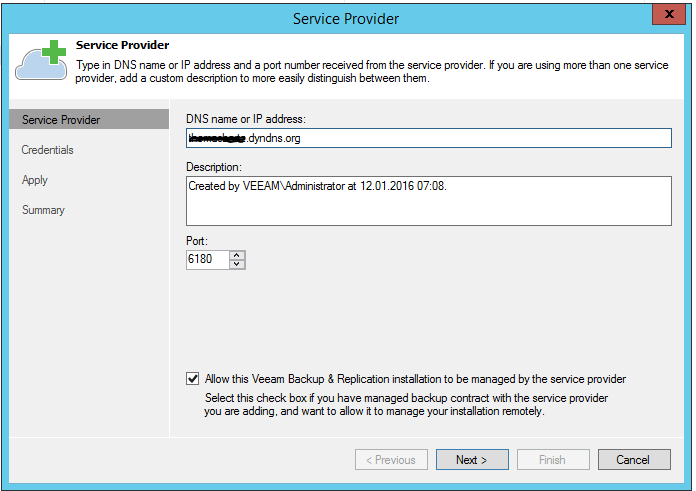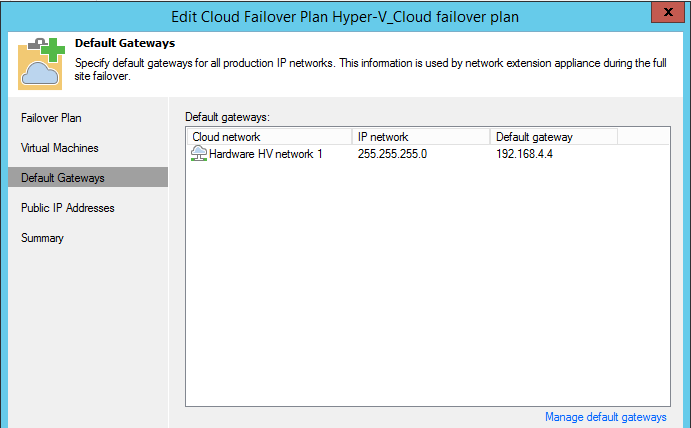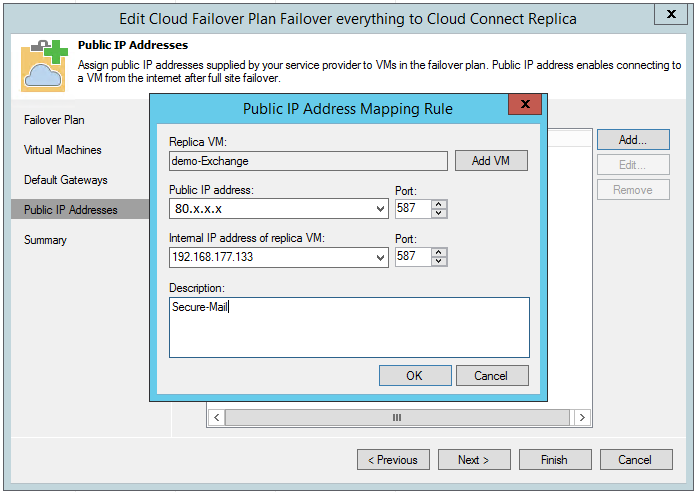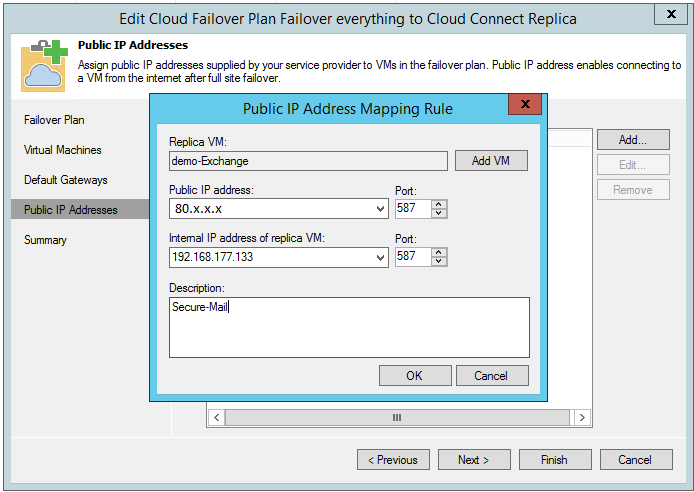The Always-On Enterprise must ensure that its services comply with today’s new demands and challenges. Availability plays a central role here. In addition to common situations where a backup is needed (for example, when a user accidentally deletes data or a system cannot start after an update), more recent issues related to encryption-based Trojans also plague organizations today. While protecting backups against encryption-based Trojans was discussed earlier in this Veeam blog, many companies continue to look for solutions that deal, not only with backup protection, but also with disaster recovery (DR) scenarios.
What is a disaster?
A single local-system crash can damage a business-critical application and result in a disaster for business operations. In a worst-case scenario, a problem such as, for instance, long-term air-conditioning interruption or a flood will go beyond the local systems and have a vast impact on the company’s infrastructure.
It is important to restore access quickly to data and systems during a disaster. For this reason, infrastructure complexity should be minimal, because complex components will make the process more difficult. VM replication is often a proposed DR solution. This option is advantageous because replicas are usually stored in the second location at a safe distance, which means that data can be used directly, without having to restore the original systems.
Some companies are in the fortunate position of being able to rely on internal resources and locations. An example would be Hot-Standby Systems in hosted datacenters, which are updated throughout replication and present an alternative to the previous in-house solution. Businesses use this solution when they want to have full control if a disaster happens. However, depending on a business’s size, Hot-Standby Systems in hosted datacenters can quickly become very expensive.
However, there is another cost-efficient way to meet the requirements for the Always-On Enterprise and achieve fast recovery times with minimal data loss.
Disaster Recovery-as-a-Service
With Cloud Connect Replication, Veeam makes it possible for customers to store their data easily, conveniently and automatically with a service provider. This allows each customer to protect their critical applications in case of disaster, without building complex secondary infrastructures and without a need to install additional software components.
Any customer who is already using Veeam, can also use Veeam Cloud Connect, because it is a part of Veeam Backup & Replication. This means customers not using the feature today do not have to perform any license upgrade. Each installed instance of Veeam Backup & Replication can use Veeam Cloud Connect for data storage (version 8 supports backup only; and version 9 supports both backup AND disaster recovery/replication). If a disaster occurs, customers can restart their virtual systems via a Veeam Backup & Replication console or a web interface.
Failover is not all that’s important
In a disaster situation, it is important, not only to perform a failover from replica, but also there should be a way back to access the primary infrastructure. Therefore, a failover in the cloud should not be a one-way solution. Veeam offers an option to easily failback to the primary infrastructure, once it is restored, by copying only data blocks changed while replica VMs were running in the service-provider data center.
Cloud and security?
Many companies want to know exactly where their data is stored and who has access to the data. The advantage of Veeam Cloud Connect is that customers can decide where data is saved and who will have access there. You can find the list of over a thousand of service providers on our website, where you can also check to see if a provider meets your criteria, for example:
- Datacenter location
- Data-security measurements
- Measurements for service Availability and Availability guarantees
- Certification level and standards (ISO, IEC, TUV, SOC, TCDP, CSA, PCI-DSS, ULD, etc.)
- Services and features (local contact, import of the initial backup, etc.)
- Price
Contracts are signed directly with Veeam Cloud Connect service providers, who are in many case well known to customers due to being local companies from the same region or even city. Customers can open support cases both with the service provider and Veeam – and our support will work with both parties to help resolve it.
Data security and data transmission
Besides the storage location of the data, it is also important to know how data is transferred between a customer and a service provider. Veeam Cloud Connect Replication provides end-to-end encryption of a connection, which protects the data against outside attacks.
Veeam Cloud Connect allows every company to perform initial data transfer by physical media (NAS, USB hard disk or tape), if the service provider supports this option. Afterwards, only modified blocks of data have to be transferred to sync to an active state.
To offload the bandwidth and reduce timeframe for all data transfers, you can leverage built-in WAN acceleration. This feature is included in Veeam Cloud Connect, and is available in the Enterprise edition. WAN accelerator is just another Veeam component installed like proxy or repository. By using intelligent caching, deduplication, compression and TCP/IP protocol optimization it provides, backups and replicas can be transferred via unreliable WAN connections with limited bandwidth.
How do I get Veeam Cloud Connect?
First, you will need to choose a service provider to store your data. Once you contact the provider, you can sign the contract directly or agree on a testing period. The service provider will give you credentials for signing up for Veeam Cloud Connect with respective resources. To use these resources, you will need to add a Service Provider on the Backup Infrastructure tab of the Veeam Backup & Replication console. This will launch a set-up wizard for your Veeam Cloud Connect by entering the information you received from the service provider.

The setup for cloud replication jobs is very similar to the traditional replication. The only difference is that you will choose Cloud Host instead of traditional Hyper-V or ESXi host.
Next, the service provider selection will be displayed, along with allocated resources. The rest of the setup is the same as with a regular replication jobs.
After the initial replication, it will be easy to distinguish the regular replica from the cloud replica, based on the replica location with a service provider name.
To simplify the failover process as much as possible during disaster recovery, there is an option to set up a failover plan for VMs. In this plan, VMs can be sorted in the same order in which they need to be booted. The advantage of this option is that you can think in advance about the order of the VMs and you don’t have to work under pressure during the disaster.

In the next failover plan settings, the network and respective gateway IPs are set up. These addresses will be registered automatically via the network extension appliance, so the service provider does not have to manage it manually.
To manage specific services externally after failover, it is possible to configure external IP address mapping rules, which must be provided by the service provider.
Disaster recovery scenarios
It is necessary to differentiate two disaster scenarios – partial and full-site failover – and have respective solutions for each of them.
Partial site failover
First, there is a scenario when a failover to the cloud needs to be executed to a small part of infrastructure services, which have been affected by a failure. This is called the partial-site failover, where only faulty systems are launched in the cloud and remaining systems run as usual in the company’s primary data center. To enable communication between systems in the cloud and data center, Veeam provides a network extension appliance. This appliance controls and tunnels traffic between the customer and the service provider. The setup of the appliance is automatically configured during the setup of a Veeam Cloud Connect provider and without any additional configuration.

Full-site failover
In the second scenario, the full site failover, it is assumed that no infrastructure services are available to the customer and everything needs to be started from the cloud. In this case, the customer can either start the systems by themselves, or ask their service provider to do it. To start the systems, the customer can use a special portal hosted by the service provider to perform the failover by selecting a pre-created failover plan (all failover plans created by customers are automatically synced to the service provider database). This way, a customer has an option to start up their systems quickly without having to contact a service provider. However, a service provider also has an option to execute a failover plan at a customer’s request.
Conclusion
New Veeam Cloud Connect Replication gives you a way to achieve effortless and cost-efficient DR to the cloud. By utilizing DRaaS services enabled by Veeam, you can fully enable Always-On requirements and quickly restore critical applications and services in case of a disaster in the on-premises data center. Simply choose a trusted service provider that is partnering with Veeam and start benefiting from this new DRaaS offering!
See Also










